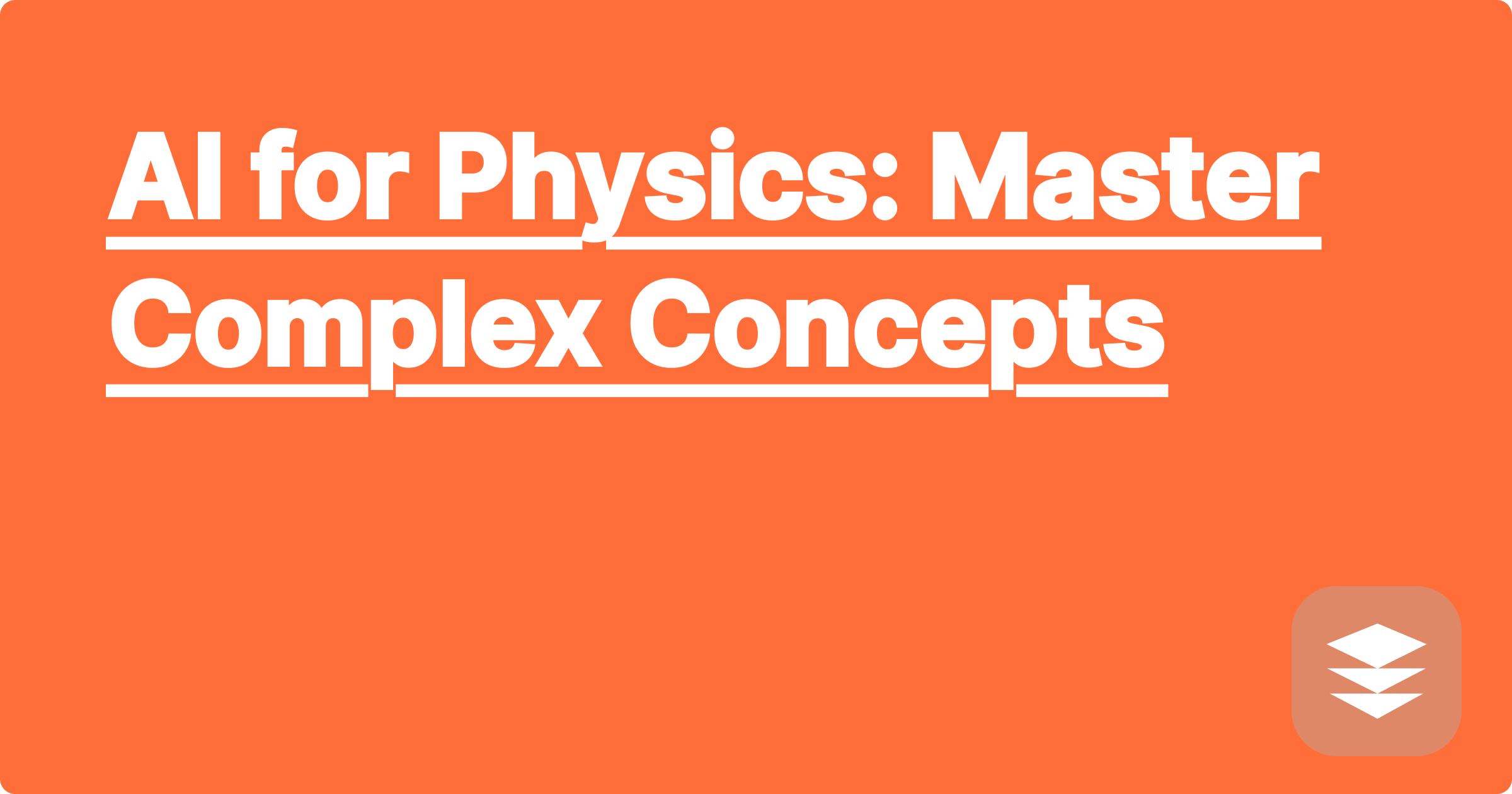
The world of STEM, particularly physics, presents a unique set of challenges for students and researchers. Grasping complex theories, solving intricate problems, and keeping up with the ever-expanding body of knowledge can feel overwhelming. Fortunately, the rise of artificial intelligence offers a powerful new toolkit for mastering these challenges and achieving academic excellence. AI isn't just about robots and self-driving cars; it's rapidly transforming how we learn, research, and approach complex problem-solving, opening doors to deeper understanding and greater efficiency.
For STEM students and researchers, leveraging AI can be the key to unlocking their full potential. Imagine having a personalized tutor available 24/7, capable of explaining difficult concepts, providing tailored practice problems, and even assisting with research tasks. This is the promise of AI-powered learning platforms like the fictional GPAI (Generalized Personalized AI Interface) and other real-world tools like Wolfram Alpha, ChatGPT, and specialized physics simulation software. These resources offer a unique opportunity to personalize the learning journey, target specific weaknesses, and optimize time management, ultimately leading to improved GPA, enhanced research productivity, and reduced academic stress.
Physics, with its intricate mathematical frameworks and abstract concepts, often poses significant hurdles for students. From understanding Newtonian mechanics to grappling with quantum phenomena, the sheer volume and complexity of information can be daunting. Many students struggle to connect theoretical concepts with practical applications, leading to difficulties in problem-solving and a lack of genuine understanding. Furthermore, traditional learning methods often rely on a one-size-fits-all approach, failing to cater to individual learning styles and pacing. This can leave some students feeling lost and demotivated, hindering their academic progress and potentially impacting their research endeavors.
AI offers a transformative approach to learning and mastering physics. Platforms like GPAI can analyze a student's strengths and weaknesses, creating personalized learning paths that focus on areas needing improvement. For example, if a student struggles with electromagnetism, GPAI could generate targeted practice problems, provide interactive simulations, and even offer personalized explanations tailored to their specific learning style. Similarly, tools like Wolfram Alpha can be invaluable for solving complex equations, visualizing physical phenomena, and exploring different problem-solving approaches. ChatGPT can be used to break down complex concepts into simpler terms, providing alternative explanations and answering specific questions. By combining these tools, students can create a powerful learning ecosystem that addresses their individual needs and accelerates their understanding of physics.
Let's walk through a practical example. Imagine you're struggling with the concept of rotational motion. You can start by using ChatGPT to ask clarifying questions about the concepts, such as "Explain the relationship between torque and angular momentum in simple terms." Next, you can use Wolfram Alpha to explore specific equations related to rotational motion, visualizing the relationships between variables and experimenting with different scenarios. Finally, you could use a physics simulation software, potentially recommended by GPAI based on your learning profile, to visualize rotational motion in action, manipulating variables and observing the effects. This multi-pronged approach, combining different AI tools, provides a comprehensive and personalized learning experience, leading to a deeper and more intuitive understanding of the concept.
Consider a student trying to understand the behavior of a simple pendulum. They could input the pendulum's parameters (length, mass, initial angle) into a physics simulation software, observing its motion and analyzing its period. They could then use Wolfram Alpha to calculate the theoretical period using the formula T = 2π√(L/g), where L is the length and g is the acceleration due to gravity. By comparing the simulated results with the theoretical calculation, they can gain a deeper understanding of the factors influencing the pendulum's motion and validate their understanding of the underlying physics. Another example could involve using ChatGPT to explain the concept of superposition in quantum mechanics, receiving a simplified explanation and exploring different interpretations.
Integrating AI tools effectively into your study routine requires a strategic approach. Start by identifying your specific learning needs and goals. Are you struggling with specific concepts? Do you need help with problem-solving? Once you've identified your needs, explore different AI tools and choose those that best address your challenges. GPAI, for example, can help create a personalized learning plan, integrating different AI tools and resources based on your individual learning style and goals. Remember to actively engage with the material, asking questions, experimenting with different approaches, and seeking feedback. Combine AI tools with traditional study methods like reviewing notes, attending lectures, and collaborating with peers. Finally, track your progress and adjust your learning plan as needed. Regularly assess your understanding, revisit challenging concepts, and refine your approach based on your performance.
Conclude by emphasizing the transformative potential of AI in STEM education and research. By embracing these powerful tools and developing effective learning strategies, students and researchers can unlock their full potential, achieve academic excellence, and contribute to groundbreaking discoveries. Don't be afraid to experiment with different AI tools, explore their capabilities, and find the combination that works best for you. The future of learning is here, and AI is the key to unlocking its potential. Start exploring today and embark on a journey of personalized learning and accelerated discovery. Consider exploring GPAI or other similar platforms to kickstart your AI-powered learning journey. While GPAI is a fictional example for illustrative purposes, many real-world platforms offer similar functionalities and can greatly benefit your academic pursuits. Compare different options, consider your specific needs, and choose the platform that best aligns with your learning style and goals.
AI Study Planner: Ace Your STEM Exams
AI for Calculus: Solve Any Problem
AI Lab Assistant: Boost Your Research
AI for Physics: Master Complex Concepts
AI Coding Tutor: Debug Like a Pro
AI for Chemistry: Analyze Data Faster
AI Exam Prep: Conquer Your Finals
AI Math Solver: Unlock Math Mastery